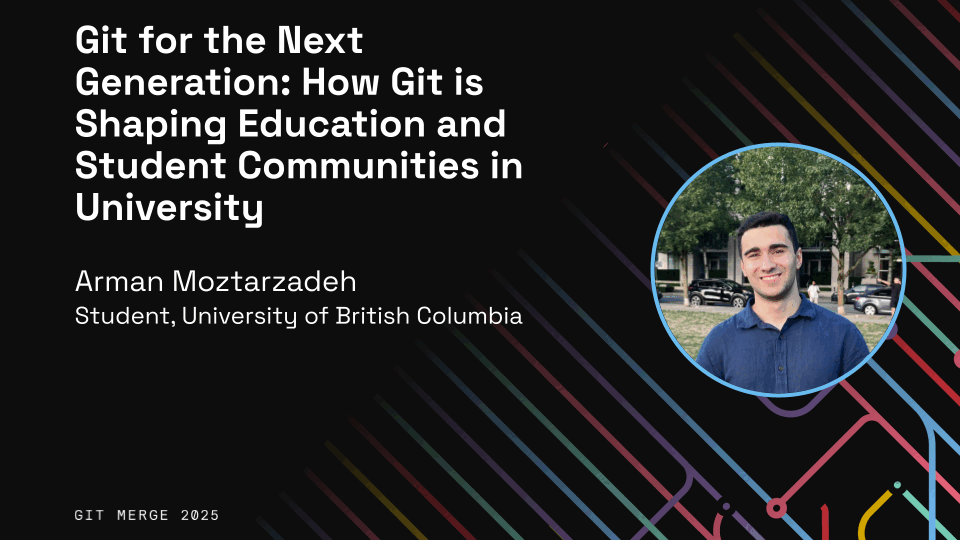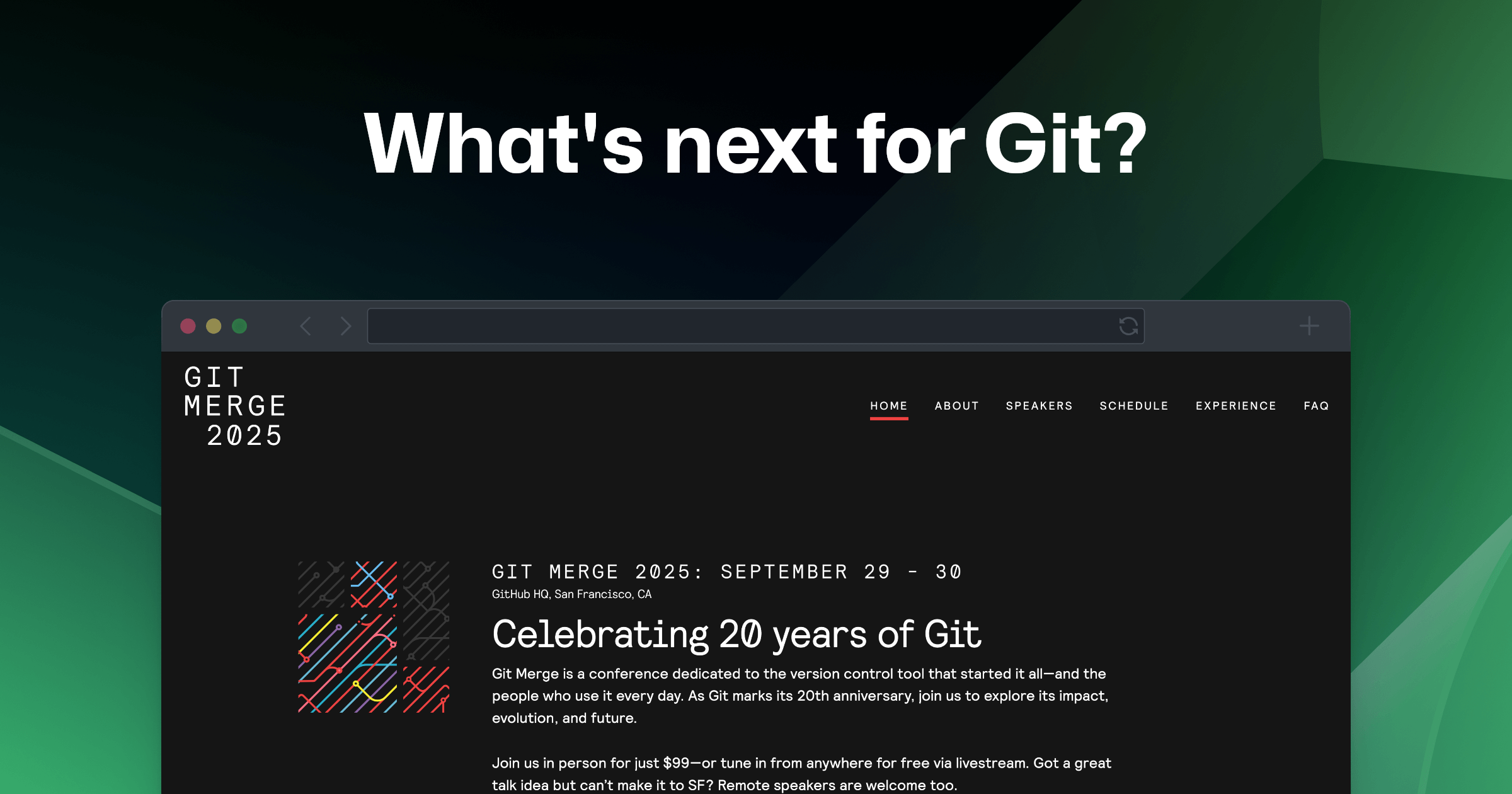This year marks 20 years since Git’s first commit. Since then, it’s become the default version control system for everything from weekend side projects to the largest monorepos in the world.

But Git’s evolution didn’t stop at git init. Every year, contributors continue to improve Git’s performance, UX, and interoperability while new tools and use cases push it into unfamiliar territory.
More than 20 years after its initial commit, the Git project continues to thrive thanks to a community that keeps pushing for better performance, new features, and a friendlier experience.
Taylor Blau, Principal Software Engineer at GitHub
At Git Merge 2025, we’re celebrating that momentum — not with nostalgia, but with a look at where Git is headed next:
- Delivering faster merges, new backends, and experiments in correctness
- Enabling SHA-256 interoperability for a more secure future
- Distilling two decades of Git UX lessons into better clients
- Teaching Git through visualization, simulation, and gamification
- Powering surprising new use cases: local-first apps, genomic research, and WASM Git servers
AI meets Git: New workflows, new friction
As AI-powered coding agents generate more of our code, new questions emerge: how should those agents use Git responsibly?
In his talk, GitHub and GitButler co-founder Scott Chacon will explore practical strategies for teaching AI agents good Git hygiene, from writing meaningful commit messages to amending, squashing, and rebasing with context. He’ll also dig into forge management challenges, showcase several Git-related MCP servers, and demo tooling he’s developed to make human-agent collaboration inside Git smoother. Finally, Scott will share ideas on how both Git and MCP could evolve to better support these workflows.
👉 Explore the full Git Merge 2025 speaker lineup and register now to attend in-person or online.

Git Merge 2025 is made possible thanks to the support of our partners Google and GitButler.
Written by
元の記事を確認する

